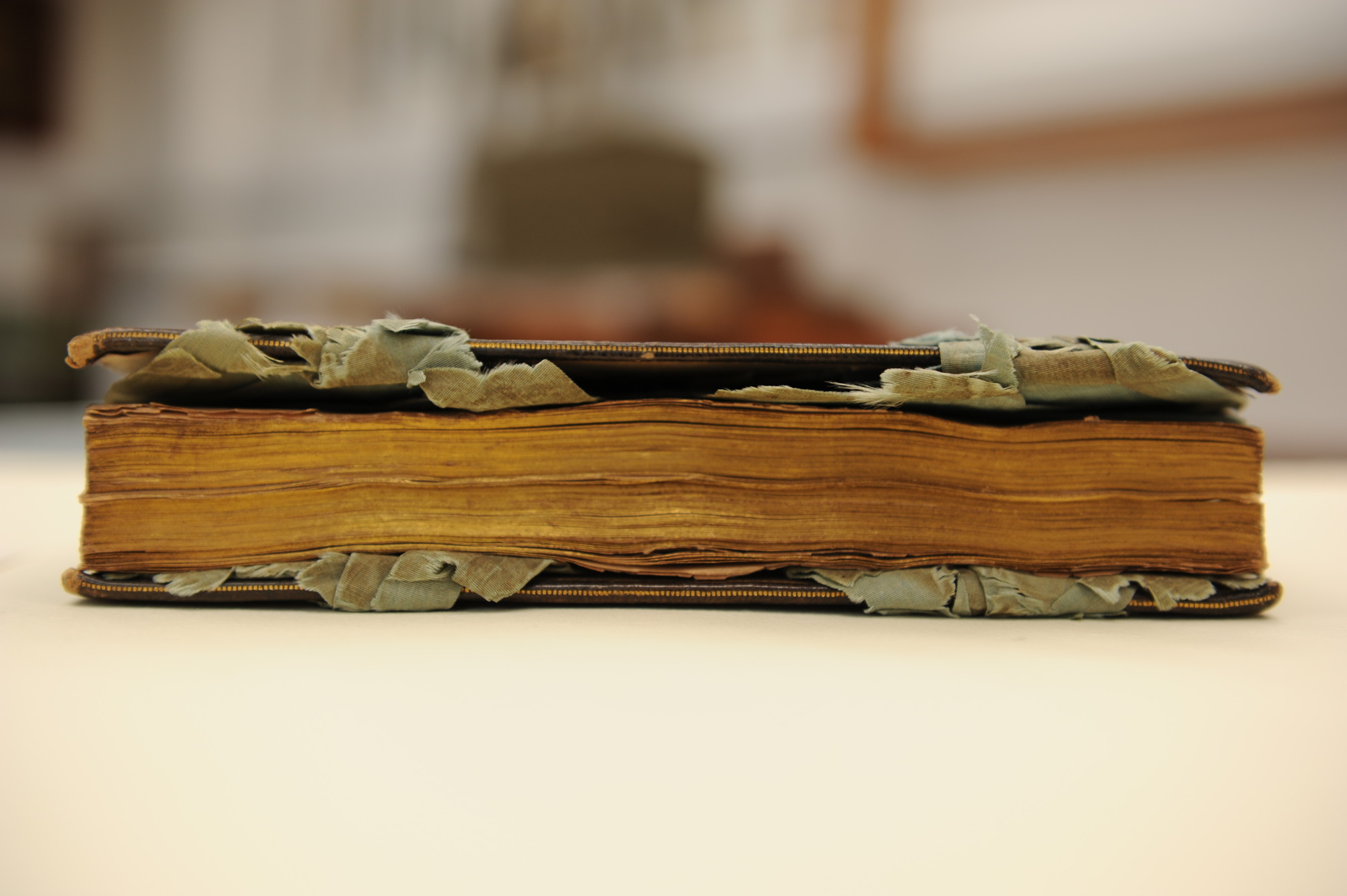
Book conservation: The Eikon Basilike
Study of this book can tell us much about its origins
Interpreting the inscription
A further suggestion that the ribbon was Charles I’s Garter ribbon is the link to Sir Oliver Fleming (d. 1661). The inscription records that the book and ribbons were the gift of Fleming, and it is possible that he could have obtained the ribbon. He was Master of Ceremonies from November 1643 until June 1660, holding the position under Charles I and continuing his service throughout the Civil War and the Commonwealth which followed Charles’s execution. It is conceivable that Fleming was given the Garter ribbon during his time with Charles I. The King is likely to have had more than one ribbon, and he might have given one away as a token to a courtier.
However, there are also suggestions that the ribbon was not Charles I’s. One possible reason why Fleming kept his position following Charles’s execution was because his first cousin was the Parliamentarian leader, Oliver Cromwell. Therefore Fleming’s loyalty to the monarch is doubtful.
The provenance of the book before Bernard Reade’s ownership is very vague, so its link to Fleming or anyone else close to the King in the seventeenth century cannot be verified. Furthermore, the inscription in the book is in an eighteenth-century hand, not a seventeenth-century one, indicating that it is not of the same date as when Fleming could have presented the ribbon, so it is not very trustworthy.
The idea of Charles I as martyr means that there are hundreds of so-called relics of him, and not all of them can be believed: another length of Garter ribbon purportedly belonging to Charles I and several large fragments of his ribbon also exist. Charles was not the only Garter knight: the foundation was the Sovereign, the Prince of Wales and twenty-four other knights, so Garter ribbons were available from more than one source.
Though we cannot be certain that the ribbon in the covers of this copy of the Eikon Basilike was the one Charles I “wore his George on”, the conservation work carried out has given us several strong indications that it could have been: it seems that it was believed to be special, and the silk itself and the insertion of it into the book both appear to be of the right date.
The conservators have considerably lengthened the life of both the book and the ribbon, making it possible for this remarkable volume to not only be further handled and investigated, but also displayed.







